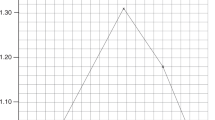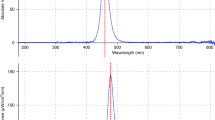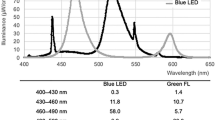Abstract
A breakthrough discovery 60 years ago by Cremer et al. has since changed the way we treat infants with hyperbilirubinemia and saved the lives of millions from death and disabilities. “Photobiology” has evolved by inquiry of diverse light sources: fluorescent tubes (wavelength range of 400–520 nm; halogen spotlights that emit circular footprints of light; fiberoptic pads/blankets (mostly, 400–550 nm range) that can be placed in direct contact with skin; and the current narrow-band blue light-emitting diode (LED) light (450–470 nm), which overlaps the peak absorption wavelength (458 nm) for bilirubin photoisomerization. Excessive bombardment with photons has raised concerns for oxidative stress in very low birthweight versus term infants treated aggressively with phototherapy. Increased emphasis on prescribing phototherapy as a “drug” that is dosed cautiously and judiciously is needed. In this historical review, we chronicled the basic to the neurotoxic components of severe neonatal hyperbilirubinemia and the use of standardized interventions.
This is a preview of subscription content, access via your institution
Access options
Subscribe to this journal
Receive 12 print issues and online access
$259.00 per year
only $21.58 per issue
Buy this article
- Purchase on Springer Link
- Instant access to full article PDF
Prices may be subject to local taxes which are calculated during checkout







Similar content being viewed by others
References
Cremer RJ, Perryman PW, Richards DH, Holbrook B. Photo-sensitivity of serum bilirubin. Biochem J. 1957;66:60P.
Dobbs RH, Cremer RJ. Phototherapy. Arch Dis Child. 1975;50:833–6.
Cremer RJ, Perryman PW, Richards DH. Influence of light on the hyperbilirubinaemia of infants. Lancet. 1958;1:1094–7.
Hansen TW. Pioneers in the scientific study of neonatal jaundice and kernicterus. Pediatrics. 2000;106:E15.
Metlinger B. Ein Regiment der jungen Kinder. Wie Man sy halten und erziechen sol von ihrer Gepurt biß zu jren Tagen komen. Dietikon-Zürich: Augsburg; 1473.
Hansen TW. Nils Rosen von Rosenstein and neonatal jaundice in the 18th century. Acta Paediatr. 2005;94:1834–6.
Hansen TW. Neonatal jaundice and scientific fraud in 1804. Acta Paediatr. 2002;91:1135–8.
Hart AP. Familial icterus gravis of the newborn and its treatment. Can Med Assoc J. 1925;15:1008.
Wallerstein H. Treatment of severe erythroblastosis by simultaneous removal and replacement of the blood of the newborn infant. Science. 1946;103:583–4.
Diamond LK. Erythroblastosis foetalis or haemolytic disease of the newborn. Proc R Soc Med. 1947;40:546–50.
Perryman PW, Richards DH, Holbrook B. Simultaneous micro-determination of serum bilirubin and of serum “Haem pigments”. Biochem J. 1957;66:61P.
Franklin AW. Influence of light on the hyperbilirubinaemia of infants. Lancet. 1958;1:1227.
Blondheim SH, Zabriskie J, Laphrop D. Kernicterus and prematurity. Brit Med J. 1962;1:52.
Senna JO, Lucey JF. Brazilian contribution to phototherapy. Pediatrics. 1970;46:644–6.
Ferreira HC, Berezin A, Barbieri D, Larrubia MN. [Super-illumination in hyperbilirubinemia in newborn infants]. J Pediatr (Rio J). 1960;25:12–4.
Ferreira HC, Cardim WH, Mellone O. [Phototherapy. A new therapeutic method in hyperbilirubinemia of the newborn]. J Pediatr (Rio J). 1960;25:347–91.
Hansen TWR, Bhutani VK. Origins of phototherapy for neonatal jaundice: the Brazilian connection. Educ Contin Saúde Einst. 2012;10:3.9.
Broughton PM, Rossiter EJ, Warren CB, Goulis G, Lord PS. Effect of blue light on hyperbilirubinaemia. Arch Dis Child. 1965;40:666–71.
Ernster L, Zetterstrom R. Bilirubin, an uncoupler of oxidative phosphorylation in isolated mitochondria. Nature. 1956;178:1335–7.
Hansen TW. Biology of bilirubin photoisomers. Clin Perinatol. 2016;43:277–90.
Lucey J, Ferriero M, Hewitt J. Prevention of hyperbilirubinemia of prematurity by phototherapy. Pediatrics. 1968;41:1047–54.
Lucey JF. Light on jaundice. N Engl J Med. 1969;280:1075–6.
Bergsma D. Bilirubin metabolism in the newborn; symposium held in Chicago, June 6, 1969. Birth defects original article series. Vol. 6. Williams and Wilkins: Baltimore; 1970.
McDonagh AF, Lightner DA. ‘Like a shrivelled blood orange’– Bilirubin, jaundice, and phototherapy. Pediatrics. 1985;75:443–55.
Lightner DA, Linnane WPd, Ahlfors CE. Bilirubin photooxidation products in the urine of jaundiced neonates receiving phototherapy. Pediatr Res. 1984;18:696–700.
Lightner DA, McDonagh AF. Molecular mechanisms of phototherapy for neonatal jaundice. Acc Chem Res. 1984;17:417–24.
Mreihil K, McDonagh AF, Nakstad B, Hansen TW. Early isomerization of bilirubin in phototherapy of neonatal jaundice. Pediatr Res. 2010;67:656–9.
Mreihil K, Madsen P, Nakstad B, Benth JS, Ebbesen F, Hansen TW. Early formation of bilirubin isomers during phototherapy for neonatal jaundice: effects of single vs. double fluorescent lamps vs. photodiodes. Pediatr Res. 2015;78:56–62.
Maisels MJ, McDonagh AF. Phototherapy for neonatal jaundice. N Engl J Med. 2008;358:920–8.
Hansen TWR. Phototherapy for neonatal jaundice – therapeutic effects on more than one level? Semin Perinatol. 2010;34:231–4.
De Carvalho M, De Carvalho D, Trzmielina S, Lopes JM, Hansen TW. Intensified phototherapy using daylight fluorescent lamps. Acta Paediatr. 1999;88:768–71.
Olusanya BO, Osibanjo FB, Emokpae AA, Slusher TM. Irradiance decay in fluorescent and light-emitting diode-based phototherapy devices: a pilot study. J Trop Pediatr. 2016;62:421–4.
Djokomuljanto S, Quah BS, Surini Y, Noraida R, Ismail NZ, Hansen TW, et al. Efficacy of phototherapy for neonatal jaundice is increased by the use of low-cost white reflecting curtains. Arch Dis Child Fetal Neonatal Ed. 2006;91:F439–42.
Mreihil K, Nakstad B, Stensvold HJ, Benth JS, Hansen TWR, Norwegian NPSG, et al. Uniform national guidelines do not prevent wide variations in the clinical application of phototherapy for neonatal jaundice. Acta Paediatr. 2018;107:620–7.
American Academy of Pediatrics. Management of hyperbilirubinemia in the newborn infant 35 or more weeks of gestation. Pediatrics. 2004;114:297–316.
Obes-Polleri J. La fototerapia en las hiperbilirrubinemias neonatales. Arch Pediatr Urug. 1967;38:77–100.
Brown AK, Kim MH, Wu PY, Bryla DA. Efficacy of phototherapy in prevention and management of neonatal hyperbilirubinemia. Pediatrics. 1985;75:393–400.
Donneborg ML, Knudsen KB, Ebbesen F. Effect of infants’ position on serum bilirubin level during conventional phototherapy. Acta Paediatr. 2010;99:1131–4.
Lamola AA, Bhutani VK, Wong RJ, Stevenson DK, McDonagh AF. The effect of hematocrit on the efficacy of phototherapy for neonatal jaundice. Pediatr Res. 2013;74:54–60.
Agati G, Fusi F, Donzelli GP, Pratesi R. Quantum yield and skin filtering effects on the formation rate of lumirubin. J Photochem Photobiol B. 1993;18:197–203.
Ebbesen F, Madsen P, Stovring S, Hundborg H, Agati G. Therapeutic effect of turquoise versus blue light with equal irradiance in preterm infants with jaundice. Acta Paediatr. 2007;96:837–41.
Ebbesen F, Vandborg PK, Madsen PH, Trydal T, Jakobsen LH, Vreman HJ. Effect of phototherapy with turquoise vs. blue LED light of equal irradiance in jaundiced neonates. Pediatr Res. 2016;79:308–12.
Ebbesen F, Madsen PH, Vandborg PK, Jakobsen LH, Trydal T, Vreman HJ. Bilirubin isomer distribution in jaundiced neonates during phototherapy with LED light centered at 497 nm (turquoise) vs. 459 nm (blue). Pediatr Res. 2016;80:511–5.
Tan KL. The pattern of bilirubin response to phototherapy for neonatal hyperbilirubinaemia. Pediatr Res. 1982;16:670–4.
Vandborg PK, Hansen BM, Greisen G, Ebbesen F. Dose-response relationship of phototherapy for hyperbilirubinemia. Pediatrics. 2012;130:e352–7.
Donneborg ML, Vandborg PK, Hansen BM, Rodrigo-Domingo M, Ebbesen F. Double versus single intensive phototherapy with LEDs in treatment of neonatal hyperbilirubinemia. J Perinatol. 2018;38:154–8.
Maisels MJ. Why use homeopathic doses of phototherapy? Pediatrics. 1996;98:283–7.
Hansen TW. Therapeutic approaches to neonatal jaundice: an international survey. Clin Pediatr (Philos). 1996;35:309–16.
Shinwell ES, Sciaky Y, Karplus M. Effect of position changing on bilirubin levels during phototherapy. J Perinatol. 2002;22:226–9.
Chen CM, Liu SH, Lai CC, Hwang CC, Hsu HH. Changing position does not improve the efficacy of conventional phototherapy. Acta Paediatr Taiwan. 2002;43:255–8.
Yamauchi Y, Kasa N, Yamanouchi I. Is it necessary to change the babies’ position during phototherapy? Early Hum Dev. 1989;20:221–7.
Linfield DT, Lamola AA, Mei E, Hwang AY, Vreman HJ, Wong RJ, et al. The effect of hematocrit on in vitro bilirubin photoalteration. Pediatr Res. 2016;79:387–90.
Donneborg ML, Vandborg PK, Hansen BM, Rodrigo-Domingo M, Ebbesen F. The impact of hemoglobin on the efficacy of phototherapy in hyperbilirubinemic infants. Pediatr Res. 2017;82:947–51.
Porto SO, Pildes RS, Goodman H. Studies on the effects of phototherapy on neonatal hyperbilirubinemia among low-birth-weht infants. I. Skin color. J Pediatr. 1969;75:1045–7.
Zachman RD. Alternate phototherapy in neonatal hyperbilirubinemia. J Pediatr. 1972;81:178.
Vogl TP, Hegyi T, Hiatt IM, Polin RA, Indyk L. Intermediate phototherapy in the treatment of jaundice in the premature infant. J Pediatr. 1978;92:627–30.
Lau SP, Fung KP. Serum bilirubin kinetics in intermittent phototherapy of physiological jaundice. Arch Dis Child. 1984;59:892–4.
Sachdeva M, Murki S, Oleti TP, Kandraju H. Intermittent versus continuous phototherapy for the treatment of neonatal non-hemolytic moderate hyperbilirubinemia in infants more than 34 weeks of gestational age: a randomized controlled trial. Eur J Pediatr. 2015;174:177–81.
Maisels MJ. Bilirubin; on understanding and influencing its metabolism in the newborn infant. Pediatr Clin North Am. 1972;19:447–501.
Akre B. [Treatment of hyperbilirubinemia in the neonatal period]. Tidsskr Nor Laege. 1974;94:716–9.
Finlay HVL, Tucker SM. Neonatal plasma bilirubin chart [letter]. Arch Dis Child. 1978;53:90–1.
American Academy of Pediatrics. Practice parameter: management of hyperbilirubinemia in the healthy term newborn. Provisional Committee for Quality Improvement and Subcommittee on Hyperbilirubinemia. Pediatrics. 1994;94:558–65.
Maisels MJ, Bhutani VK, Bogen D, Newman TB, Stark AR, Watchko JF. Hyperbilirubinemia in the newborn infant > or =35 weeks’ gestation: an update with clarifications. Pediatrics. 2009;124:1193–8.
Rennie J, Burman-Roy S, Murphy MS. Neonatal jaundice: summary of NICE guidance. BMJ. 2010;340:c2409. Guideline Development Group.
Bratlid D, Nakstad B, Hansen TW. National guidelines for treatment of jaundice in the newborn. Acta Paediatr. 2011;100:499–505.
World Health Organization. WHO recommendations on newborn health. 2017. http://www.who.int/maternal_child_adolescent/documents/newborn-health-recommendations/en/.
Brown AK. Neonatal hyperbilirubinemia. In: Behrman RM, editor. Neonatology: Diseases of the Fetus and Infant. St. Louis: Mosby; 1973.
Gartner LM, Herrarias CT, Sebring RH. Practice patterns in neonatal hyperbilirubinemia. Pediatrics. 1998;101:25–31.
Mreihil K, Benth JS, Stensvold HJ, Nakstad B, Hansen TWR, Norwegian NPSG, et al. Phototherapy is commonly used for neonatal jaundice but greater control is needed to avoid toxicity in the most vulnerable infants. Acta Paediatr. 2018;107:611–9.
Mukherjee D, Coffey MP, Maisels MJ. How many babies in the NICU receive phototherapy and for how long? Acta Paediatr. 2017;106:19–20.
Atkinson LR, Escobar GJ, Takayama JI, Newman TB. Phototherapy use in jaundiced newborns in a large managed care organization: do clinicians adhere to the guideline? Pediatrics. 2003;111:e555–61.
Kuzniewicz MW, Escobar GJ, Newman TB. Impact of universal bilirubin screening on severe hyperbilirubinemia and phototherapy use. Pediatrics. 2009;124:1031–9.
Bhutani VK, Stark AR, Lazzeroni LC, Poland R, Gourley GR, Kazmierczak S, et al. Predischarge screening for severe neonatal hyperbilirubinemia identifies infants who need phototherapy. J Pediatr. 2013;162:477–82 e471.
Tølløfsrud PA, Bjørhus E, Vårdal MH. Bilirubin levels and need for phototherapy during the first 4 postnatal days in healthy Norwegian neonates >36 weeks of gestation. Boston, MA: Pediatric Academic Societies; 2012.
Phillips RM, Goldstein M, Hougland K, Nandyal R, Pizzica A, Santa-Donato A, et al. Multidisciplinary guidelines for the care of late preterm infants. J Perinatol. 2013;33(Suppl 2):S5–22.
Keren R, Luan X, Friedman S, Saddlemire S, Cnaan A, Bhutani VK. A comparison of alternative risk-assessment strategies for predicting significant neonatal hyperbilirubinemia in term and near-term infants. Pediatrics. 2008;121:e170–9.
Mah MP, Clark SL, Akhigbe E, Englebright J, Frye DK, Meyers JA, et al. Reduction of severe hyperbilirubinemia after institution of predischarge bilirubin screening. Pediatrics. 2010;125:e1143–8.
Bhutani VK. Multidisciplinary guidelines for the care of late preterm infants. J Perinatol. 2014;34:81.
Olusanya BO, Emokpae AA. Use of transcutaneous bilirubin to determine the need for phototherapy in resource-limited settings. Neonatology. 2017;111:324–30.
Hansen TW, Nietsch L, Norman E, Bjerre JV, Hascoet JM, Mreihil K, et al. Reversibility of acute intermediate phase bilirubin encephalopathy. Acta Paediatr. 2009;98:1689–94.
Harris MC, Bernbaum JC, Polin JR, Zimmerman R, Polin RA. Developmental follow-up of breastfed term and near-term infants with marked hyperbilirubinemia. Pediatrics. 2001;107:1075–80.
Johnson L, Bhutani VK, Karp K, Sivieri EM, Shapiro SM. Clinical report from the pilot USA Kernicterus Registry (1992 to 2004). J Perinatol. 2009;29(Suppl 1):S25–45.
Morris BH, Oh W, Tyson JE, Stevenson DK, Phelps DL, O’Shea TM, et al. Aggressive vs. conservative phototherapy for infants with extremely low birth weight. N Engl J Med. 2008;359:1885–96.
Lamola AA. A pharmacologic view of phototherapy. Clin Perinatol. 2016;43:259–76.
Peluffo E, Beltran JC, Malinger A, Giguens W, Vila Vidal P, Lorenzo YDIJ, et al. [Light therapy in jaundices in the newborn]. Arch Pediatr Urug. 1962;33:98–105.
Okwundu CI, Okoromah CA, Shah PS. Prophylactic phototherapy for preventing jaundice in preterm or low birth weight infants. Cochrane Database Syst Rev. 2012;1:CD007966.
Davies MW. Commentary on ‘Prophylactic phototherapy for preventing jaundice in preterm or low birth weight infants’. Evid Based Child Health. 2013;8:250–1.
Tyson JE, Pedroza C, Langer J, Green C, Morris B, Stevenson D, et al. Does aggressive phototherapy increase mortality while decreasing profound impairment among the smallest and sickest newborns? J Perinatol. 2012;32:677–84.
Hansen TW. Let there be light-but should there be less? J Perinatol. 2012;32:649–51.
Owa JA, Adebami OJ, Fadero FF, Slusher TM. Irradiance readings of phototherapy equipment: Nigeria. Indian J Pediatr. 2011;78:996–8.
Pejaver RK, Vishwanath J. An audit of phototherapy units. Indian J Pediatr. 2000;67:883–4.
van Imhoff DE, Hulzebos CV, van der Heide M, van den Belt VW, Vreman HJ, Dijk PH, et al. High variability and low irradiance of phototherapy devices in Dutch NICUs. Arch Dis Child Fetal Neonatal Ed. 2013;98:F112–6.
Dani C, Poggi C, Barp J, Romagnoli C, Buonocore G. Current Italian practices regarding the management of hyperbilirubinaemia in preterm infants. Acta Paediatr. 2011;100:666–9.
Bhutani VK. Committee on Fetus and Newborn American Academy of Pediatrics. Phototherapy to prevent severe neonatal hyperbilirubinemia in the newborn infant 35 or more weeks of gestation. Pediatrics. 2011;128:e1046–52.
Abramov I, Hainline L, Lemerise E, Brown AK. Changes in visual functions of children exposed as infants to prolonged illumination. J Am Optom Assoc. 1985;56:614–9.
Dobson V. Editorial: phototherapy and retinal damage. Invest Ophthalmol. 1976;15:595–8.
Dollberg S, Atherton HD, Hoath SB. Effect of different phototherapy lights on incubator characteristics and dynamics under three modes of servocontrol. Am J Perinatol. 1995;12:55–60.
Messner KH, Maisels MJ, Leure-DuPree AE. Phototoxicity to the newborn primate retina. Invest Ophthalmol Vis Sci. 1978;17:178–82.
Oh W, Karecki H. Phototherapy and insensible water loss in the newborn infant. Am J Dis Child. 1972;124:230–2.
Kopelman AE, Brown RS, Odell GB. The “bronze” baby syndrome: a complication of phototherapy. J Pediatr. 1972;81:466–72.
Mallon E, Wojnarowska F, Hope P, Elder G. Neonatal bullous eruption as a result of transient porphyrinemia in a premature infant with hemolytic disease of the newborn. J Am Acad Dermatol. 1995;33:333–6.
Aydemir O, Soysaldi E, Kale Y, Kavurt S, Bas AY, Demirel N. Body temperature changes of newborns under fluorescent versus LED phototherapy. Indian J Pediatr. 2014;81:751–4.
Jahnukainen T, Lindqvist A, Jalonen J, Kero P, Valimaki I. Responsiveness of cutaneous vasculature to thermal stimulation during phototherapy in neonatal jaundice. Eur J Pediatr. 1999;158:757–60.
Rosenfeld W, Sadhev S, Brunot V, Jhaveri R, Zabaleta I, Evans HE. Phototherapy effect on the incidence of patent ductus arteriosus in premature infants: Prevention with chest shielding. Pediatrics. 1986;78:10–14.
Yao AC, Martinussen M, Johansen OJ, Brubakk AM. Phototherapy-associated changes in mesenteric blood flow response to feeding in term neonates. J Pediatr. 1994;124:309–12.
Kjartansson S, Hammarlund K, Sedin G. Insensible water loss from the skin during phototherapy in term and preterm infants. Acta Paediatr. 1992;81:764–8.
Lai NM, Ahmad Kamar A, Choo YM, Kong JY, Ngim CF. Fluid supplementation for neonatal unconjugated hyperbilirubinaemia. Cochrane Database Syst Rev. 2017;8:CD011891.
Tonz O, Vogt J, Filippini L, Simmler F, Wachsmuth ED, Winterhalter KH. [Severe light dermatosis following photo therapy in a newborn infant with congenital erythropoietic urophyria]. Helv Paediatr Acta. 1975;30:47–56.
Bauer J, Buttner P, Luther H, Wiecker TS, Mohrle M, Garbe C. Blue light phototherapy of neonatal jaundice does not increase the risk for melanocytic nevus development. Arch Dermatol. 2004;140:493–4.
Csoma Z, Hencz P, Orvos H, Kemeny L, Dobozy A, Dosa-Racz E, et al. Neonatal blue-light phototherapy could increase the risk of dysplastic nevus development. Pediatrics. 2007;119:1269.
Schulz S, Wong RJ, Vreman HJ, Stevenson DK. Metalloporphyrins – An update. Front Pharm. 2012;3:68.
Stevenson DK, Rodgers PA, Vreman HJ. The use of metalloporphyrins for the chemoprevention of neonatal jaundice. Am J Dis Child. 1989;143:353–6.
Vreman HJ, Wong RJ, Stevenson DK. Alternative metalloporphyrins for the treatment of neonatal jaundice. J Perinatol. 2001;21(Suppl 1):S108–13.
Wong RJ, Bhutani VK, Vreman HJ, Stevenson DK. Tin mesoporphyrin for the prevention of severe neonatal hyperbilirubinemia. NeoReviews. 2007;8:e77–84.
Dunn PM. Dr Alfred Hart (1888–1954) of Toronto and exsanguination transfusion of the newborn. Arch Dis Child. 1993;69:95–6.
Author information
Authors and Affiliations
Corresponding author
Ethics declarations
Conflict of interest
The authors declare that they have no conflict of interest.
Additional information
Publisher’s note: Springer Nature remains neutral with regard to jurisdictional claims in published maps and institutional affiliations.
Rights and permissions
About this article
Cite this article
Hansen, T.W.R., Maisels, M.J., Ebbesen, F. et al. Sixty years of phototherapy for neonatal jaundice – from serendipitous observation to standardized treatment and rescue for millions. J Perinatol 40, 180–193 (2020). https://doi.org/10.1038/s41372-019-0439-1
Received:
Revised:
Accepted:
Published:
Issue Date:
DOI: https://doi.org/10.1038/s41372-019-0439-1
This article is cited by
-
Advances to diminish global newborn kernicterus mortality
Journal of Perinatology (2024)
-
Effect of phototherapy on eosinophils count in neonatal hyperbilirubinemia (cross-sectional study)
Egyptian Pediatric Association Gazette (2023)
-
Alloimmune hemolytic disease of the fetus and newborn: genetics, structure, and function of the commonly involved erythrocyte antigens
Journal of Perinatology (2023)
-
Phototherapy: a new risk factor for necrotizing enterocolitis in very low birth weight preterm infants? a retrospective case–control study
Journal of Perinatology (2023)
-
Irradiance footprint of phototherapy devices: a comparative study
Pediatric Research (2022)



